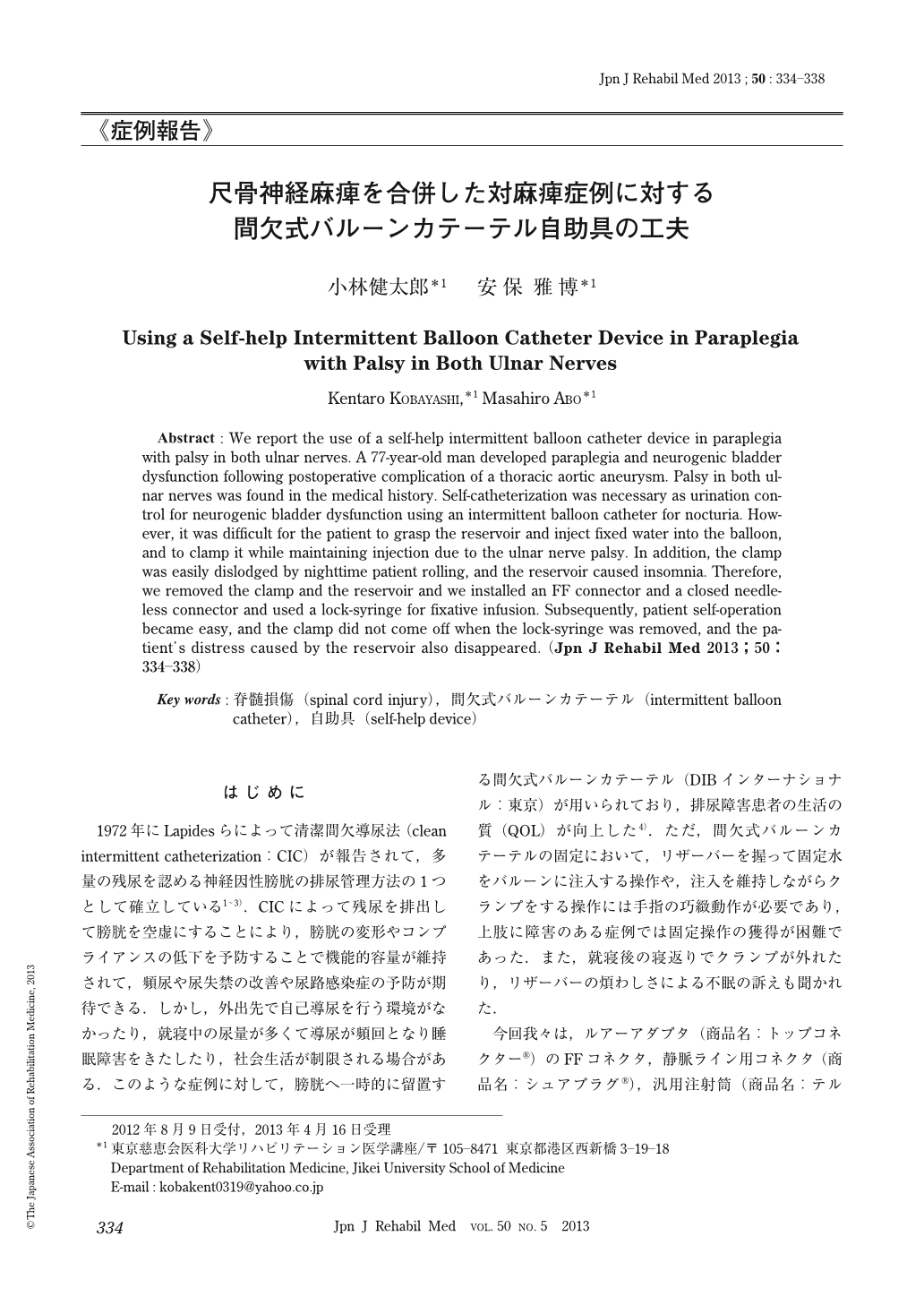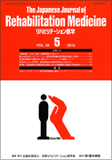Japanese
English
- 販売していません
- Abstract 文献概要
- 1ページ目 Look Inside
- 参考文献 Reference
はじめに
1972年にLapidesらによって清潔間欠導尿法(clean intermittent catheterization:CIC)が報告されて,多量の残尿を認める神経因性膀胱の排尿管理方法の1つとして確立している1~3).CICによって残尿を排出して膀胱を空虚にすることにより,膀胱の変形やコンプライアンスの低下を予防することで機能的容量が維持されて,頻尿や尿失禁の改善や尿路感染症の予防が期待できる.しかし,外出先で自己導尿を行う環境がなかったり,就寝中の尿量が多くて導尿が頻回となり睡眠障害をきたしたり,社会生活が制限される場合がある.このような症例に対して,膀胱へ一時的に留置する間欠式バルーンカテーテル(DIBインターナショナル:東京)が用いられており,排尿障害患者の生活の質(QOL)が向上した4).ただ,間欠式バルーンカテーテルの固定において,リザーバーを握って固定水をバルーンに注入する操作や,注入を維持しながらクランプをする操作には手指の巧緻動作が必要であり,上肢に障害のある症例では固定操作の獲得が困難であった.また,就寝後の寝返りでクランプが外れたり,リザーバーの煩わしさによる不眠の訴えも聞かれた.
今回我々は,ルアーアダプタ(商品名:トップコネクター®)のFFコネクタ,静脈ライン用コネクタ(商品名:シュアプラグ®),汎用注射筒(商品名:テルモシリンジ®)のロックタイプを用いることで間欠式バルーンカテーテルの固定動作を簡素化することができ,上肢機能障害例において自己操作可能となったので,考察を加えて報告する.
Abstract : We report the use of a self-help intermittent balloon catheter device in paraplegia with palsy in both ulnar nerves. A 77-year-old man developed paraplegia and neurogenic bladder dysfunction following postoperative complication of a thoracic aortic aneurysm. Palsy in both ulnar nerves was found in the medical history. Self-catheterization was necessary as urination control for neurogenic bladder dysfunction using an intermittent balloon catheter for nocturia. However, it was difficult for the patient to grasp the reservoir and inject fixed water into the balloon, and to clamp it while maintaining injection due to the ulnar nerve palsy. In addition, the clamp was easily dislodged by nighttime patient rolling, and the reservoir caused insomnia. Therefore, we removed the clamp and the reservoir and we installed an FF connector and a closed needleless connector and used a lock-syringe for fixative infusion. Subsequently, patient self-operation became easy, and the clamp did not come off when the lock-syringe was removed, and the patient's distress caused by the reservoir also disappeared.

Copyright © 2013, The Japanese Association of Rehabilitation Medicine. All rights reserved.


